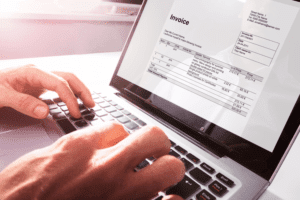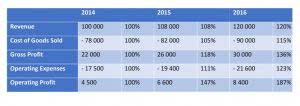
Businesses typically issue notes receivable to formalize agreements for extended payment terms, loans to customers, or other credit transactions. On the other hand, businesses typically incur notes payable when borrowing money, issuing bonds, or entering into agreements where they owe payments to external parties. The effective interest rate is the rate that exactly discounts the expected stream of future cash payments through the life of the note receivable to the net carrying amount of the financial asset. The effective interest rate takes into account the impact of compounding, providing a more precise measure of the return on investment for the lender. The valuation of notes receivable on the balance sheet also reflects any interest accrued to date that has not yet been received.
- Companies, however, can expand their business models to include more than one type of receivable.
- For example, a company may have an outstanding account receivable in the amount of $1,000.
- This information is vital for stakeholders to understand the financial impact of credit losses and the company’s approach to managing credit risk.
- The future amount can be a single payment at the date of maturity or a series of payments over future time periods or some combination of both.
- When interest will be paid on a Note Receivable is specified in the promissory note.
- The examples provided account for collection of the note in full on the maturity date, which is considered an honored note.
- The following example uses months but the calculation could also be based on a 365-day year.
What is the Difference Between Notes Receivable and Accounts Receivable?

Understanding these nuances helps stakeholders assess the company’s liquidity risk and informs their investment or lending decisions. Explore the intricacies of notes receivable, from initial recognition to liquidity analysis, to enhance your financial reporting accuracy. The first journal is to record the principal amount of the note receivable.

3.2 Maturity (Due) Date

Chartered accountant Michael Brown is the founder and CEO of Double Entry Bookkeeping. He has worked as an accountant and consultant for more than 25 years and has built financial models for all types of industries. He has been the CFO or controller of both small and medium sized companies and has run small businesses of https://www.bookstime.com/ his own. He has been a manager and an auditor with Deloitte, a big 4 accountancy firm, and holds a degree from Loughborough University.
- Notes receivable are an essential element of financial reporting, representing claims for payments not immediately realized.
- As discussed earlier, a note (also called a promissory note) is an unconditional written promise by a borrower to pay a definite sum of money to the lender (payee) on demand or on a specific date.
- A note receivable is a promissory note made by a maker to a payee promising to repay a specified amount at a future time.
- The first set of entries show collection of principal, followed by collection of the interest.
- For example, if the interest rate (I/Y) is not known, it can be derived if all the other variables in the equation are known.
- Clearly, the reporting of receivables moves the coverage of financial accounting into more complicated territory.
3: Note Receivable
They’re shown in the shareholder’s balance sheet as the current assets if the note is due within one year; else, they will be shown under the now-current head in the balance sheet if the note is due after one year. Notes receivable are different from other types of receivables, as here, the time frame for a customer to pay off the credit is extended. Unlike trade receivables, which are usually settled within a few weeks, notes receivable allow customers additional time to pay beyond standard billing terms. Additionally, a note receivable often includes a predetermined interest rate. The maker is obligated to pay both the principal amount and the interest as compensation for the extended payment period.
- The principal part of a note receivable that is expected to be collected within one year of the balance sheet date is reported in the current asset section of the lender’s balance sheet.
- Notes receivable can be treated as either current assets or non-current assets depending on the timelines and intention of the company.
- The valuation of notes receivable on the balance sheet also reflects any interest accrued to date that has not yet been received.
- Terrance Inc. agrees to grant Dino-Kleen a longer period of time to pay the invoice in exchange for 5% interest.
- However, the document as such is a current asset if the principal is due to be received within one year of issuing the document.
- 2The independent auditors also analyze the available evidence and must believe that it is sufficient to provide the same reasonable assurance in order to render an unqualified opinion on the financial statements.
Accounting for Notes Receivable Accounting Student Guide

Often, a business will allow customers to convert their overdue accounts (the business’ accounts receivable) into notes receivable. The initial solution was https://www.instagram.com/bookstime_inc to categorize some leases as capital leases, which are essentially purchases of the asset. If it is still unable to collect, the company may consider selling the receivable to a collection agency.
- This is because the amortization of the discount is in equal amounts and does not take into consideration what the carrying amount of the note was at any given period of time.
- This may involve detailing past due or impaired notes, as well as the movements in the allowance for credit losses.
- Yes, notes receivable are typically classified as current assets if they are expected to be collected within one year.
- When examining a company’s balance sheet, notes receivable are typically categorized under current or non-current assets, depending on the maturity date of the promissory notes.
- For this reason, notes are negotiable instruments the same as cheques and bank drafts.
Time Value of Money
For Notes due in less than one year, Notes Receivable accounts are listed in the Current Asset section of the Balance Sheet. Notes Receivable due in more than one year are listed in the Long-term Asset section of the Balance Sheet. Double Entry Bookkeeping is here to are notes receivable a current asset provide you with free online information to help you learn and understand bookkeeping and introductory accounting.
